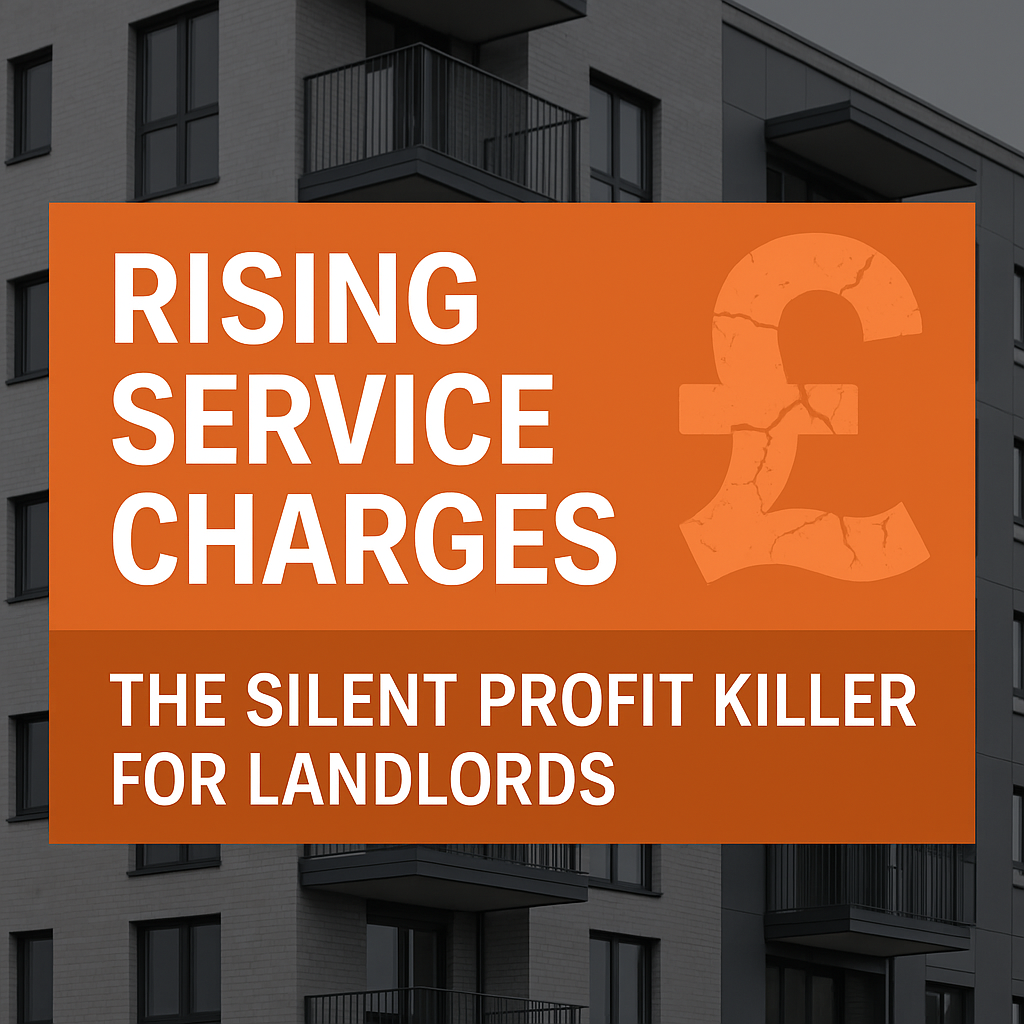The Silent Profit Killer: How Rising Service Charges Are Eating into UK Landlord Returns
Service charges have quietly become one of the biggest threats to landlord profitability in the UK. While most landlords focus on rent levels, mortgage costs, or upcoming legislation, many are overlooking the creeping rise of building-related charges that directly erode net yield.
In this guide, we’ll break down what’s happening, why service charges are increasing, and — most importantly — how you can protect your profits.

Why Are Service Charges Rising?
For landlords of leasehold flats or HMOs in converted buildings, service charges are nothing new. But over the last 12–18 months, costs have been climbing sharply due to three main factors:
Building Safety Requirements
The Building Safety Act and fire safety legislation have triggered costly inspections, cladding remediation, and mandatory upgrades. These bills are often passed down to leaseholders through service charges.Soaring Building Insurance Premiums
Freeholders and managing agents are facing steep hikes in block insurance costs — in some cases doubling in a year. Those increases are shared across all leaseholders.Energy and Maintenance Inflation
Rising utility prices for communal areas (lighting, lifts, heating), plus higher labour and material costs, are pushing routine maintenance charges up year on year.
The Hidden Impact on Landlord Profit
It’s easy to underestimate the effect. For example:
Service charges rising by £100 per month = £1,200 per year less profit.
On a property with £6,000 net annual profit, that’s a 20% drop in yield — overnight.
These increases rarely attract headlines but can quietly tip a property from profitable to loss-making.
What Landlords Can Do to Protect Their Yields
1. Scrutinise Service Charge Accounts
Most landlords receive an annual breakdown of charges. Instead of filing it away, go through line by line. Look for:
Excessive management fees
Unexplained “administration costs”
Overpriced insurance policies (often tied to commissions)
2. Challenge Unfair or Excessive Costs
Under the Landlord and Tenant Act 1985, service charges must be “reasonable.” If you believe costs are inflated, you can:
Request supporting invoices
Question the managing agent in writing
Apply to the First-tier Tribunal if disputes escalate
3. Budget for Hidden Future Costs
Don’t assume charges will stay stable. Factor in:
Building safety works (e.g., fire doors, alarms, cladding)
Reserve funds for major repairs
Insurance renewals that could jump sharply
By budgeting, you avoid nasty surprises that can sink your cash flow.
4. Consider Collective Action
If you own in a block where service charges are spiralling, you may not be alone. Options include:
Joining forces with other leaseholders to question charges
Forming a Right to Manage (RTM) company to take control
Pressuring freeholders to tender insurance/maintenance contracts competitively
5. Recalculate Your ROI
Don’t just look at gross rent minus mortgage. Factor service charge volatility into your ROI calculations before buying or holding leasehold properties. What looks profitable on paper may be far less attractive after charges
(Use our free ROI Calculator).
The Bottom Line for Landlords
Service charges are often treated as a background cost, but in today’s environment they’ve become a silent profit killer.
Ignoring them could wipe out your margins, while proactive landlords who challenge and manage these charges can protect and even improve their net returns.
As always, profit protection starts with awareness and action. The sooner you get on top of service charges, the stronger your rental business will be.
